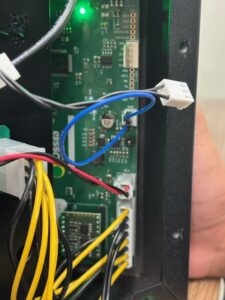Week 1: I’m making something!… It will be great!…
Sumin S -
Hello, my name is Sumin! I’m a senior at BASIS San Antonio Shavano Campus planning to pursue a career in the field of materials as well as biomedical engineering! Welcome to my Senior Project blog! For the next 10 weeks, I will post my experiences and the things I learned throughout this journey of Senior Project. I am extremely happy and grateful to get this opportunity to work under the guidance of Dr. Gongchen Sun, assistant professor at the University of Texas at San Antonio in the Department of Biomedical and Chemical Engineering. I will be working closely with his graduate student Gabriel G who is in the 2nd year of the Ph.D. program. I’m planning to go in for about 4 hours a day every Monday, Tuesday, and Thursday, and for the rest of the week, I will spend my time reviewing the literature to get a more in-depth understanding of the biomedical engineering field since it is a new branch of engineering for me.
On my first day at the lab, which was this Monday, Gabriel gave me a quick tour of the lab and general information on the research that he is currently working on with Dr. Sun. He explained to me that the goal of this project is to develop a new mechanism and technique to separate the cells. One of the fundamental challenges in the field of biomedical engineering or any other fields that require cell samples is the inability to extract and maintain the cell sample fresh without any damage or contamination; in fact, almost 80% of the extracted cell samples are either damaged or contaminated. This challenge was one the main reasons that led Dr. Sun to study cell separators and design one that can extract cell samples effectively.
Even though Gabriel described every single detail of the research step-by-step, it was still difficult for me to fully understand all the magical scientific words (especially with two solutions named PEG and DEX). But, in my understanding, this research is using the two-phase system, meaning two different types of solution that don’t mix, to separate fresh living cells from dead damaged cells. The two solutions, PEG and DEX, form distinct layers due to their different chemical properties. When a sample containing cells is introduced into this system and subjected to centrifugation force, the living, and dead cells distribute themselves between the two layers based on their surface properties and densities. Fresh, living cells tend to migrate into one phase, while dead or damaged cells remain in the other, enabling efficient separation.

My task in this project is to design and develop a centrifugation spinner that could capture an instant result. According to Dr. Sun, one of the major problems in the research was not being able to view the sample immediately under a microscope right after the sample was centrifuged. The tiny movement that results from the transport of the sample from the centrifugation spinner to the microscope caused the sample to be compromised. For instance, an air bubble formation can make it difficult to obtain good results. To assist in solving this difficulty, my Senior Project will be designing a laboratory spinner that has a microscope camera.

During my first two days in the lab, I focused on deconstructing the spinner provided to me and exploring ways to bypass its built-in sensor. In order to capture real-time results of the sample, the spinner needed to continue operating even when the lid was open. However, the safety mechanism in place automatically stopped the spinning motion once the lid was lifted. To overcome this challenge, I had to disable the sensor entirely. My approach involved circulating the electrical current within the spinner, allowing it to function without interruption. Of course, I did not arrive at this solution on my own. With Gabriel’s guidance, I was able to identify the necessary modifications. For the next few weeks, I will keep studying more about the spinner itself and make a design of this spinner.
That is all for this week! Thank you so much for your time and I hope you enjoyed reading my first post!

Comments:
All viewpoints are welcome but profane, threatening, disrespectful, or harassing comments will not be tolerated and are subject to moderation up to, and including, full deletion.